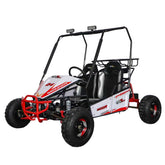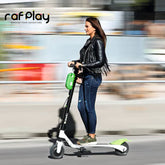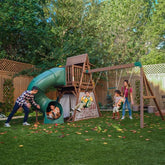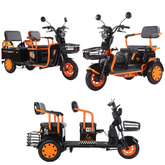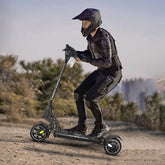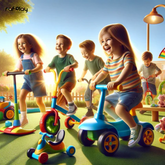Comparing Eva Tyres vs Rubber Tyres: Pros, Cons, and Performance
Eva Tyres vs Rubber Tyres
Have you ever found yourself in a bike store or online, grappling with the decision of whether to opt for rubber tires or Eva tires for your child's bike, scooter, or even stroller? If so, you're not alone in this common dilemma.
Then you are not alone yourself.
This is a frequent conundrum, and the choice you make here is not just a simple decision. It may have a significant impact on the comfort and effectiveness of these goods.
Understanding Eva Tyres

Ethylene-vinyl acetate (EVA), a plastic renowned for its lightness, softness, and flexibility, is used to make Eva tires.
The tires get their characteristics from this substance, similar to rubber.
Eva tires are valued for their lightweight and are often found on kids' ride-on toys or smaller strollers.
This feature results in a lighter product overall, which makes maneuverability easier for little hands (and parents).
Eva tires are also less expensive since their production is more straightforward than that of rubber tires.
But it's crucial to remember that Eva tires are more rigid than pneumatic tires.
Less traction results from this, especially when riding off-road or on uneven terrain.
Conversely, its high degree of elasticity guarantees a smooth ride on smooth urban surfaces like concrete.
Understanding Rubber Tyres

Let's talk about rubber tires. These are made from the rubber tree's sap.
The material offers better quality since it is inherently gripping, softer, and more durable than Eva.
Rubber tires are better for outdoor play because they provide superior grip and prevent wheel slide-outs.
Because of its intrinsic flexibility, they provide a smoother, more pleasant ride by better adapting to the terrain.
Rubber tires are more costly and heavier than Eva tires; therefore, this inherent attribute has a cost.
However, the advantages exceed the disadvantages for many.
Comparative Analysis: Eva Tyres Vs Rubber Tyres

Weight and Terrain Considerations
When it comes to weight, Eva tires are the best option. This makes them a good fit for lightweight items like strollers and kid's toys.
However, with their natural "knobbiness," rubber tires win out regarding grip and off-road ability.
Material and Manufacturing
Because they are composed of plastic, EVA tires are simple and affordable to produce.
Conversely, because they come from natural sources, rubber tires are more complicated to make but have excellent durability, softness, and grip.
Comfort and Traction
Rubber tires give a usually more pleasant ride because of their inherent flexibility, even though Eva tires may provide a respectable ride on smooth ground.
Rubber tires' higher traction guarantees a safer ride, particularly on uneven terrain.
Durability and Costs
Eva tires are less expensive than their rubber equivalents but cannot last as long. Therefore, rubber tires might be wise for anyone looking for durability and improved performance. This section will help you understand the cost implications of your choice and make a decision that fits your budget.
Environmental Considerations
The environment must be considered while considering Eva and rubber tires.
While Eva tires are made of plastic and raise concerns about recycling and disposal, rubber tires are naturally occurring and need a significant amount of energy to manufacture.
User Preference Based on Use-case
The final decision between rubber tires and Eva may depend on certain use-case situations.
For example, Eva (or foam-filled) tires are lighter and less expensive, making them a better option for urban commuting with less off-road use.
However, the comfort and grip offered by rubber (or air-filled) tires may be the determining factor for individuals looking for adventure on various terrains.
Rubber Tyres: Also Known as Air-filled Tyres
Although we call them rubber tires, the biking and strolling world commonly refers to these as "air-filled tires."
Their other name comes from the fact that they can flex and absorb abnormalities in the landscape, much like air does under pressure.
Eva Tyres: The Foam-filled Alternative
Although we call them rubber tires, the biking and strolling world commonly refers to these as "air-filled tires."
Their other name comes from the fact that they can flex and absorb abnormalities in the landscape, much like air does under pressure.
Because of the nature of the Eva substance, Eva tires are sometimes referred to as "foam-filled tyres."
Although they might not be as flexible as air-filled tires, they have some stiffness and bounce thanks to their foam-like construction.
| Feature | Eva Tyres | Rubber Tyres |
| Weight | Light | Heavier |
| Traction | Less (better on smooth terrain) | High (superior on various terrains) |
| Manufacturing Process | Simple and Economical | More Complex and Expensive |
| Comfort | Good (on smooth surfaces) | Superior (on various terrains) |
| Durability | Lower | Higher |
| Environmental Impact | Concerns around disposal | Energy-intensive processing |
Venturing into Slick Tyres
While rubber and Eva tires have many advantages for different uses, slick tires are a different category to look for if your riding requirements are exclusive to dry, smooth terrain.
Basics of Slick Tyres
Eva and rubber tires have many benefits for different uses. If you need to ride on flat, smooth areas, consider Slick Tyres.
How Slick Tires Work
They have a smooth, tread-free surface that makes them slick. This design choice makes the most touch with the ground.
This more extensive touch area makes it much easier to grip dry, smooth surfaces like streets, racetracks, and indoor sports fields.
But remember that slick tires don't work well in wet or off-road areas because they lack the lines that keep water out or grip the uneven ground.
Slick Tyres: A Choice Beyond Eva and Rubber
Whether you choose slick tires made of rubber or an Eva-like material, their job is to perform well on certain surfaces.
Rubber-slick tires might have better grip and durability, making them an excellent choice for fast-track racing.
On the other hand, Eva's slick tires might be better for light rides on smooth city streets or indoor sports equipment because they are lighter.
Remember, the best choice between Eva, rubber, or slick tires depends on your use case. Each type of tire has its pros and cons, and the best one for you will be the one that best suits your needs and the situations in which you'll be using them.
Each type of tire has pros and cons, and the best one for you will depend on where and how you plan to use your car or other tools.
Conclusion
When choosing between Eva tires and rubber tires, it's crucial to consider your specific needs and preferences. It will ensure that you make the best choice for your situation.
Eva tires are the best choice for smooth, urban roads if you want something light and cheap.
Instead, buying rubber tires is a good idea if you want a comfy, long-lasting tire with a good grip, especially for off-road surfaces.
Finding the right balance between cost, comfort, speed, and longevity is essential when deciding. Each type of tire has pros and cons, and the best choice for you depends on your unique circumstances, ensuring your decision is personalized and tailored to your needs.
Freequently Ask Question
Are Eva tires suitable for all weather conditions?
Eva tires can be used in many situations but might be better in terrible weather. Because they don't grip as well, they might not be as safe in wet or cold situations as rubber tires. On the other hand, they work well in warm weather, especially on smooth urban ground.
How do Eva and Rubber tires impact the speed of a bike or scooter?
Yes, the type of tire can change how fast a bike or scooter goes. Because Eva tires are lighter, they help you go faster on flat, smooth surfaces. But because they grip and stability better, rubber tires might be better for controlling speed, especially on rough or off-road surfaces.
Can I replace the Eva tires on my stroller with rubber tires?
You can switch from Eva to rubber tires if the new tires are the right size for your stroller's wheels. However, this could make the stroller heavier, making it harder to move around. Before making this change, it's essential to consider whether the benefits of rubber tires (like better grip and comfort) are more significant than the downsides, such as the extra weight and possibly higher upkeep needs.
How do I maintain my Eva or Rubber tires to maximize their lifespan?
Keep an eye on both types of tires for signs of wear and tear. For Eva tires, ensure no deep cuts or gouges could make them less safe. rubber tires must check their air pressure regularly to ensure they work at their best. Also, cleaning your tires every so often can help keep them from wearing out too quickly from dirt or grit. But tires wear out over time and will need to be replaced at some point, even if you take great care of them.
#EVAtire #Rubbertire


